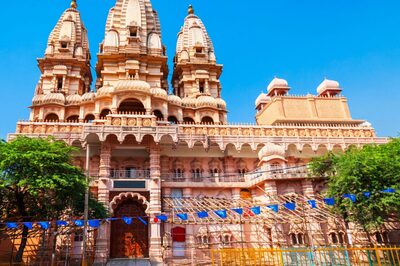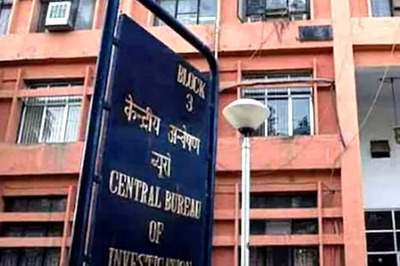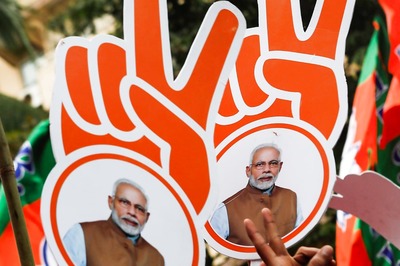
views
In recent times, several seemingly healthy celebrities have suffered heart attacks, revealing a startling truth about the lack of awareness regarding one’s physical condition. The latest actor to suffer a heart attack and undergo angioplasty is Iqbal star Shreyas Talpade. Before that, in March, actress Sushmita Sen had disclosed that she too suffered a heart attack and underwent angioplasty.
In 2022, the conversation over the increasing incidence of heart ailments and cardiac arrests gained momentum after the death of renowned singer KK. In 2021, several other celebrities, including Kannada superstar Puneeth Rajkumar, TV actor Sidharth Shukla and director Raj Kaushal, lost their lives due to cardiac arrests at a young age.
The notable increase in heart attacks and untimely deaths has been a cause for alarm, highlighting the shift of cardiac ailments to a considerably younger age group.
By now, Covid-19 has been recognised for increasing risk of heart attacks and strokes, with heightened inflammation seen in severe cases likely contributing to this elevated risk, at least one year after the infection.
Meanwhile, contrary to speculated connections between Covid-19 vaccines and heart attacks, the latest study by the Indian Council of Medical Research (ICMR) found no linkages between Covid-19 and sudden deaths due to heart attacks among people aged 18 to 45.
It found that factors such as Covid-19 hospitalisation, a family history of sudden deaths, binge alcohol drinking, and engaging in intense unaccustomed activity are linked to a higher risk of sudden death.
Definite Increase in Angioplasties
According to Dr Mukharjee Madivada, senior interventional cardiologist and managing director at Hyderabad-based Pulse Heart Center, five years ago, the percentage of people undergoing angioplasties was around 10% in the age group of less than 40 years.
“Now it’s almost 15%. While the increase is modest, it’s a definite increase,” he said, adding that “around 70% of people who undergo angioplasty are younger 60 years”.
At KMC Hospital, Mangalore, 150-175 angioplasties are performed every month. More than 55-60 of these patients fall under the primary angioplasty category, which means these are patients who suffered a heart attack.
“This alone shows the burgeoning increase in coronary artery disease (CAD) occurrence in our patients,” Dr P Kamath, interventional cardiologist at KMC Hospital told News18. “In these 60 patients, more than 40-45% are less than 40 age group, again exemplifying the enormity of the problem among youth.”
“We anticipate that the winter season may intensify coronary events, with a potential clustering of unstable angina in the early morning,” he added.
According to Dr Deepak Krishnamurthy, senior interventional cardiologist at Bengaluru-based Kauvery Hospital, 20% of angioplasties are done among people below 45 years of age.
Dr Mohit Bhutani, senior interventional cardiologist at Amrita Hospital in Faridabad, also told News18 that he has seen a large number of patients undergoing angioplasties below 50 years of age, which can be termed as “young patients” having heart diseases.
Angioplasty is a medical procedure to widen narrowed or obstructed blood vessels, particularly arteries. The term is commonly associated with coronary angioplasty, a procedure performed on coronary arteries that supply blood to the heart muscle.
During coronary angioplasty, a thin, flexible tube called a catheter is threaded through a blood vessel, often starting from the groin or wrist, and guided to the blocked or narrowed coronary artery. Once in place, a small balloon at the tip of the catheter is inflated, compressing the plaque or fatty deposits against the artery walls, thereby widening the artery and improving blood flow.
In some cases, a stent — a small mesh tube — may be inserted into the artery to help keep it open. Angioplasty is often done to treat conditions like coronary artery disease, where a build-up of plaque can lead to reduced blood flow to the heart, potentially causing chest pain or a heart attack. This procedure is less invasive than traditional open-heart surgery and is a common method for managing certain cardiovascular conditions.
Natural Linkages Between Indians and Heart Diseases
In 2005, research featured in the Vascular Health journal highlighted that individuals in the 30-45 age bracket in India face an increased risk of premature Coronary Artery Disease (CAD), leading to the potential of losing their lives 10 to 15 years earlier compared to similarly aged populations worldwide.
As per a study published in 2014, deaths due to coronary heart disease in the Indian subcontinent have doubled since 1990 and are expected to increase by an additional 50% by 2030.
Various factors contribute to the development of heart disease, including type-2 diabetes, insulin resistance, and related metabolic disturbances, which are more prevalent among Indians than Europeans. These factors have been suggested as significant contributors to the higher risk of coronary heart disease (CHD) among Indians.
Another study, published in 2021, conducted by researchers from Massachusetts General Hospital in the US revealed that individuals of Indian and South Asian descent are twice as likely to develop heart diseases compared to those of European ancestry. The research involved comparing the rates of cardiovascular disease events, such as heart attacks and strokes, between people of South Asian and European ancestry.
The findings indicated that 6.8% of participants with South Asian ancestry experienced a cardiovascular disease event, in contrast to 4.4% of those with European ancestry. These statistics, along with other data, underscore the vulnerability of younger Indians to heart diseases.
This emphasises the importance for Indians to embrace a heart-healthy diet and healthy lifestyle from a young age, incorporating regular check-ups and lipid screening.
Recognising this reality that our bodies are vulnerable to heart diseases is crucial, followed by proactive steps.




















Comments
0 comment